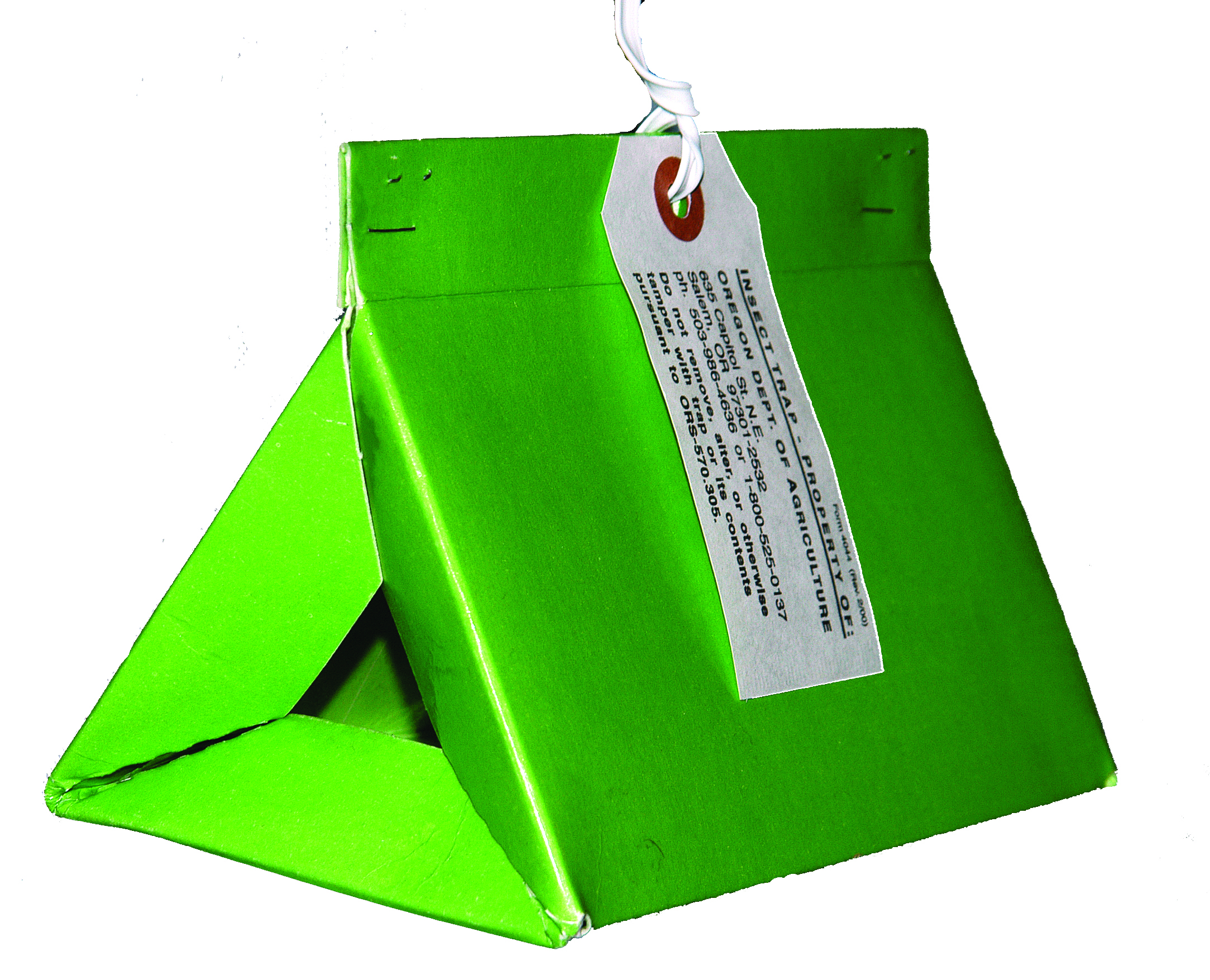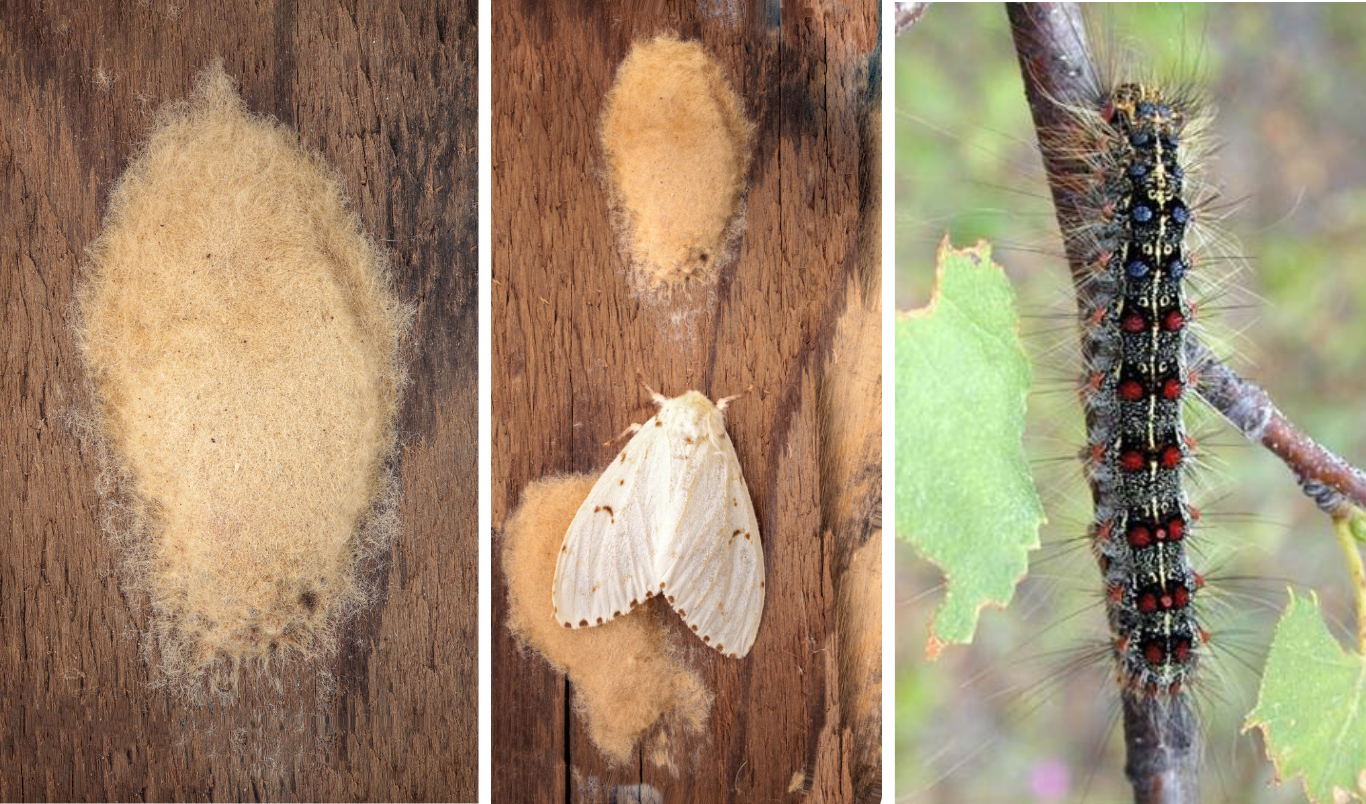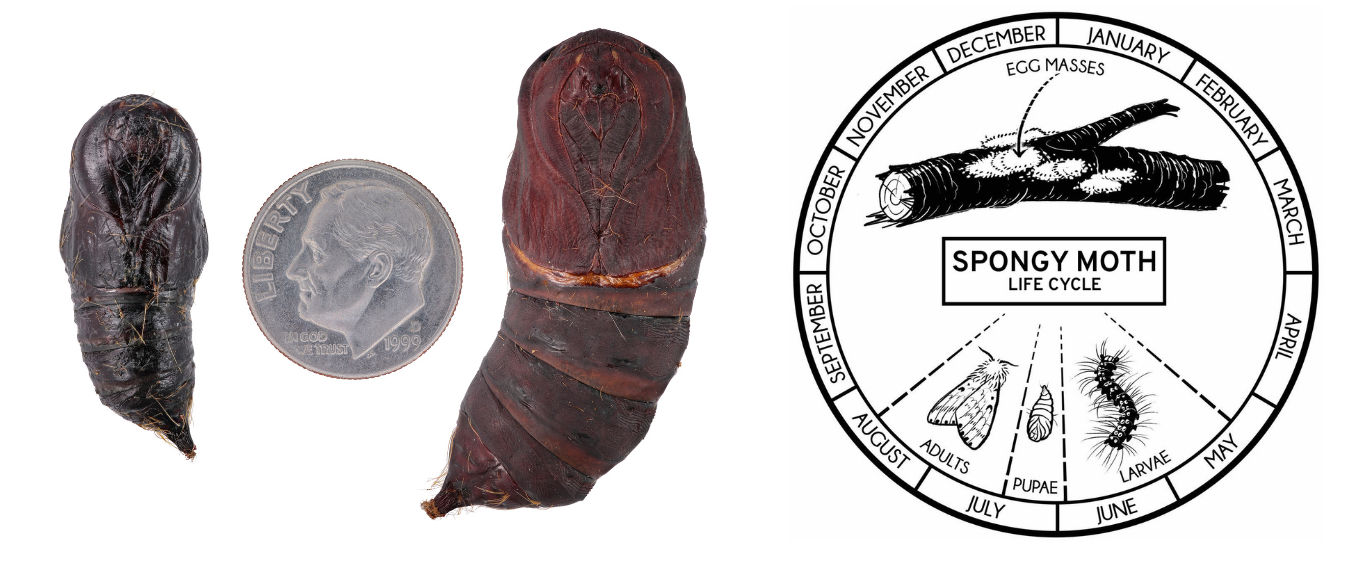Spongy moth (SM), Lymantria dispar dispar, is one of the most destructive and well-established forest pests in the eastern US. SM regularly defoliates millions of acres of trees and shrubs in that region. It is slowly moving westward on its own, but it can also move more quickly and farther by car, moving truck, recreational vehicle, storage pods, etc. to non-infested states to start new isolated populations.
Related to SM and not yet established in the US, are four Asian spongy moth species and subspecies which belong to the flighted spongy moth complex (FSMC). FSMC has the potential to become an even more destructive pest than SM since the moths of this subspecies complex feed on a wider host range, including larch and Douglas fir, two important tree species for the logging industry in Oregon. Unlike SM, FSMC females are capable of flight, which means they could spread and establish more quickly.
Since no spongy moth species are currently established in Oregon, the Oregon Department of Agriculture's (ODA) and USDA Animal Plant Health and Inspection Service Plant Protection and Quarantine (USDA APHIS PPQ) conduct extensive survey programs to detect any new introductions. Every spring and summer thousands of traps are placed across the state in populated areas, ports and waterways, campgrounds, previously positive sites, and other high-risk sites.
Current Updates
In 2023 and 2024 spongy moths were trapped in Bend, OR near the Southern Crossing Neighborhood. In response to these recent detections, ODA has placed a high density grid of traps in and around this neighborhood to determine if there is an established population there.
These high-density trapping efforts are called delimitation surveys and occur in response to any and all detections of spongy moth in Oregon. Delimitation surveys continue for three consecutive years after the initial detection. There are several other active delimitation surveys being conducted in Oregon, including Benton, Washington, and Marion counties, with no subsequent detections in those counties since those efforts began. ODA invites anyone that thinks they may have seen spongy moth in Oregon to report images to the Oregon Invasive Species hotline. Please include location details and clear photographs. You can also report directly to the ODA using the contact information at the bottom of this page.

Spongy moth trap: contains a pheromone lure and glue
Identification
Adults: Male moths are smaller than females, approximately 1.5 inches in wingspan, grayish-brown to light brown in color, with a pattern of darker wavy lines crossing the forewing, often darkest in the middle and the outer wing margin. The hindwing also has a wide dark marginal band. However, the hindwings are often hidden by the forewings at rest, giving the male moth a somewhat triangular shape. Males have broad, feathery antennae, much wider than that of the female. Female moths have larger, more elongate, and mostly white wings with typically less dark banding than males and are about 2 to 2.5 inches in wingspan. Females of the North American strain (and European) don't fly and usually leave their egg masses near where they emerged.
Eggs: The eggs are laid and covered with a buff-colored, sponge-like mass which is further covered in soft fuzzy scales from the female's body. Egg masses can be laid on nearly any surface, including firewood, plant material, outdoor household articles, or recreational vehicles.
Caterpillars (larvae): Larvae are black and hairy and very small when first hatched. The new larvae can disperse by releasing a silk thread and catching the wind (called ballooning) to other hostplants where they begin feeding. Full grown caterpillars are from 2 to 2.5 inches long and have five pairs of blue spots and 6 pairs of red spots on their backs. Older caterpillars can consume large amounts of foliage, potentially weakening trees.
Pupae: Spongy moth pupae range from 0.75 to about 1.5 inches long, with the females larger. There is also a notable color difference where male pupae are nearly black while females are a reddish brown. They often have some hairs on the surface and make loose, messy cocoons that can be seen through. Like egg masses, cocoons and pupae can be attached to many different objects as the larvae wander to hiding places before transforming to pupae.

Unhatched spongy moth egg mass on left, female SM with egg mass in center, SM larva on right

Spongy moth pupal cases (left: male, right: female) on left, SM life cycle on right
What you can do to help keep spongy moth out of Oregon
Please report potential sightings to the Oregon Invasive species hotline including a detailed description of the location and a photo. It is recommended to prioritize taking a photo and then if able, capture the insect.
Before moving wood products, plant material, outdoor furniture, or recreational vehicles out of spongy moth infested areas, inspect thoroughly for spongy moth egg masses, caterpillars and adults. Contact ODA if you find any suspected spongy moth life stages. Please also encourage anyone you know who has recently moved to or visited Oregon from the northeastern US to do the same.
Hosting a trap in your yard and keeping an eye on traps placed in your neighborhood helps to support the ODA's efforts. State employees may ask for access to your property to place and check insect-monitoring traps.